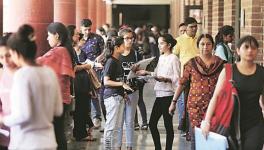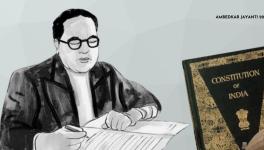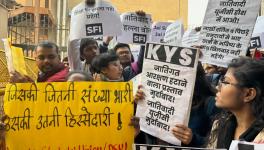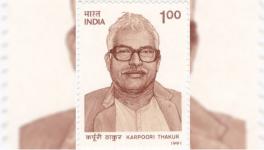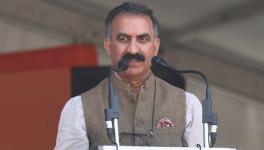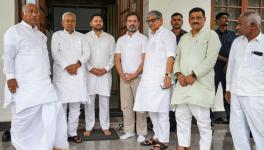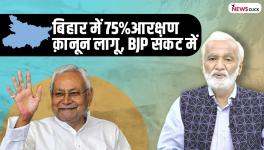Hathras Incident in the Context of Being Dalit and Middle Class
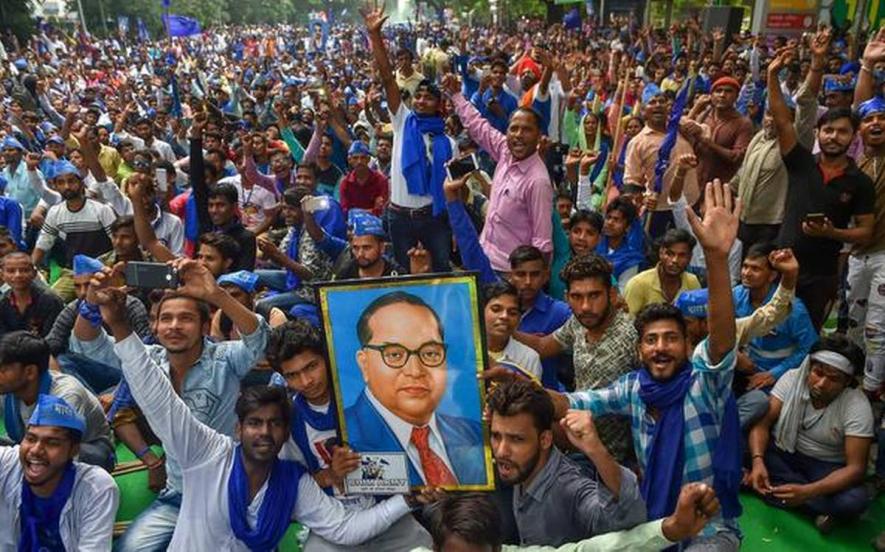
Representational image. | Image Courtesy: The Hindu
The gruesome incident in Hathras has foregrounded the unchanging nature of violent relations between castes and persistent contempt for Dalits in much of India’s rural hinterland. Within this unchanging story is also a story of the new Dalit middle class, which has emerged over the past few decades due to affirmative action policies. While reservation continues to be an important tool for social and economic mobility, it has also produced variations in Dalit political narratives, and these need to be made sense of.
Dalit leader and former Member of Parliament Prakash Ambedkar recently lamented that elected Dalit politicians are doing pretty much nothing for the larger cause of Dalit emancipation and have become a class unto themselves. He went to the extent of demanding abolition of reserved electoral constituencies for Dalits. The crisis articulated by Ambedkar needs to be articulated beyond just making the case that elected Dalit leaders and middle classes have become opportunistic. The scenario is more complex: here, how class mobility is interacting with the unchanging status relations also needs to be examined.
Reservation has provided economic mobility to a tiny fraction, about 6% of Dalits, but their social status has remained unchanged. How, then, does one theorise this fractional change within the larger context of a rigid social structure?
Before the Dalit middle class is the unenviable task of representing themselves and providing a social imaginary that fits their economic mobility. Yet, while doing so, they are often reminded of their social background and the larger responsibility they still bear towards those Dalits who still languish in everyday violence and face social ostracism.
The Dalit social class has opened a narrative that seems to have little relevance for the emancipation of those Dalits who are still left behind. And in turn, the Dalit middle class argues that it lacks the social power to emancipate the rest and that it is unfair to impose this burden on them. They also point out that Dalit emancipation cannot be the exclusive concern of Dalits themselves.
Urban Dalit middle classes today are invested in finding their own voice and representing themselves. For this, they have staked a claim on an “exclusive” Dalit politics that is distanced from all other political groups, especially the Left, which represents the bulk of progressive sensibilities of “caste Hindus”. Here, the Dalit middle class does not find it useful to forge an alliance but wishes instead for the progressive caste Hindus—even if they stand by their progressive commitments—to vacate the social spaces they have occupied. So, an Arundhati Roy writing on BR Ambedkar is seen as less of a commitment towards the cause of Dalit emancipation and more of occupying a space that they see as legitimately belonging to newer and younger Dalit scholars.
Consider what a young Dalit academic told me: “As long as people like Arundhati write on Ambedkar, who will read us?” This seems to be a legitimate concern, and it emerges more from the imperatives of class mobility and pressure to achieve social status. In other words, this concern relates to the striving of Dalits for social mobility rather than fighting caste-based exclusions, where interventions by progressive caste Hindus could still be relevant, even indispensable.
Middle class Dalits face the dual pressure of being urban and middle class on the one hand and being Dalit on the other. This is a difficult labyrinth to navigate. It seems like a reasonable choice to aspire for distancing themselves from certain kinds of fixed narratives of what constitutes being a Dalit. For instance, the middle class among the Dalits aspire to see Dalits as urbane, English-speaking, getting to play the lead role in mainstream cinema, fair-skinned, well-dressed, and well-to-do. A recent short film, The Discreet Charm of Savarnas, critiques Savarna progressives who hold stereotypical notions of Dalits being dark-skinned, vulnerable and diffident. These are significant strides in changing the personhood of who is a Dalit, but it does not resonate with the conditions of a majority of Dalits in rural areas. Does this kind of a change in the narrative help middle class Dalits gain confidence to better represent those who are left behind? Or does it signify the distancing of the middle class Dalits from the rest of the Dalit community?
There can be a complex overlap where Dalit middle classes aspire to belong more to the middle class, and less to the Dalit identity, and this is precisely what affirmative action policies were supposed to have achieved. But by default, it also means that such a class remains distanced in its being, culture and language from the rest of the Dalits. This raises a significant question as to whether the Dalit middle class can continue to represent the rest of Dalit community. The liminal question here is how can Dalit middle classes move beyond the imposed identity of being Dalit while continuing to represent the rest of the Dalits and their concerns?
Dalit middle classes often legitimately lament that they face routine questions such as “but you don’t look Dalit”. This is more an insinuation than a compliment; a reflection of prejudice more than an acknowledgement of successful social mobility. Similarly, many “Dalit” scholars take objection at being referred to as “Dalit intellectuals” and rightly ask why they cannot be “just intellectuals”? Yet, in the same breath, they would object to caste Hindus writing about BR Ambedkar and call it an illegitimate appropriation rather than a valid recognition that Ambedkar was more than “just” a Dalit.
The most worrying part of these liminal spaces is a possible counter-narrative by conservative caste Hindus and right-wing forces raising a moral erosion to any claims of being Dalit. The other worry is that even political leaders such as Prakash Ambedkar may read this change as distancing and opportunism (even though we cannot discount some part of that). Suraj Yengde, in his recent book, Caste Matters, also seems to reduce the issue to how members of the Dalit middle class have become “salaried hypocrites”.
The issue is far more complex, and this is where space has opened up for a new age Dalit leadership in people such as Gujarati legislator Jignesh Mevani and Uttar Pradesh-based Chandrashekhar Azad. They are changing the terms of the discourse about being Dalit through their militant protest politics. Their politics seems to encapsulate both the claim of being a militant, and thereby not stereotypical, Dalit. Mevani has set a different narrative, of being both critical of the progressive Left and yet expressing willingness to work with them. This goes beyond the Dalit middle class and its search for “exclusive” self-representation. There is a new confidence of simultaneously being and not being a Dalit. He, along with Azad, was the first to respond to events in Hathras. Neither saw a necessity to maintain a distance in order to not be a “stereotypical Dalit”, nor the need to claim “exclusivity” to protest and challenge the unholy powers in Uttar Pradesh and elsewhere.
The author is associate professor, CPS, JNU. His forthcoming book is Emotive Majority: Ethics and Emotions in New India. The views are personal.
Get the latest reports & analysis with people's perspective on Protests, movements & deep analytical videos, discussions of the current affairs in your Telegram app. Subscribe to NewsClick's Telegram channel & get Real-Time updates on stories, as they get published on our website.










